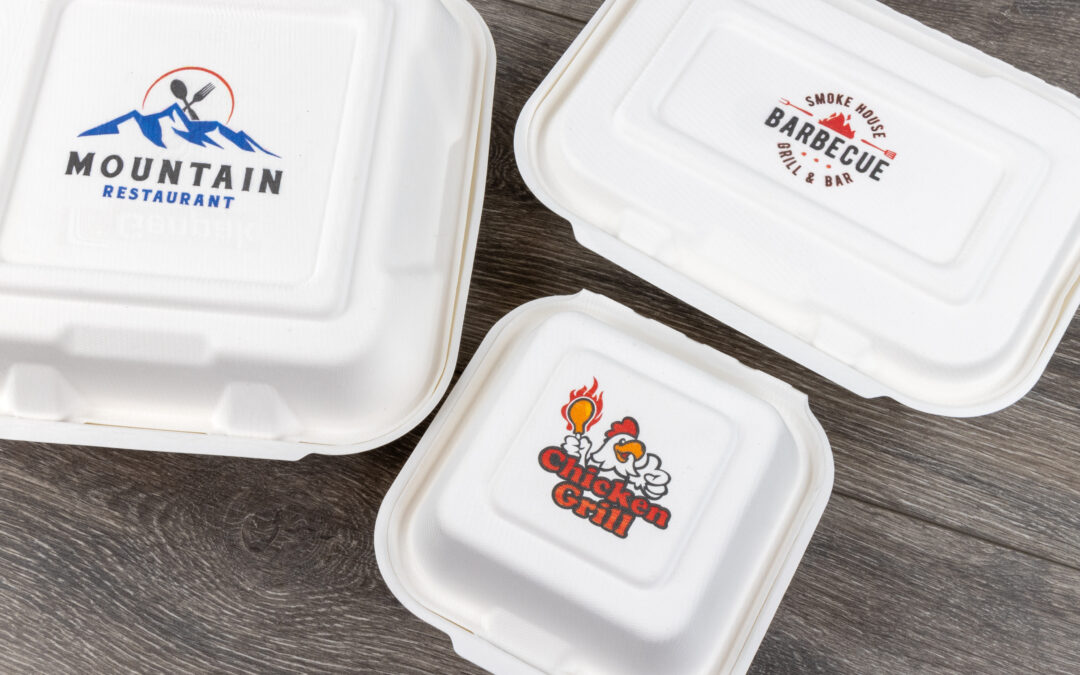A restaurant operator hoping to make an ecological packaging decision needs to be conversant in the following words: biodegradable, compostable, disposable, durable, perishable, recyclable, renewable, reusable, stackable, sustainable. This is what is required if they want their food delivered with taste and charm and in packaging that doesn’t harm the earth. If only Duolingo offered a class.

A Recirclable reusable.
“One restaurant owner told us that simply trying to find the best single-use container was exhausting,” said Margie Bell, the co-founder of Recirclable, a start-up offering a reusables-return program. Bell signed that operator to her program, in which consumers agree to bring reusable containers back to restaurants within two weeks or risk a fine. But the vast majority of restaurants still use single-use plastics, which have dominated the industry for decades.
The plastic-waste crisis accelerated during the pandemic. You remember. Back then, delivery was the only way to get restaurant food. And thank goodness. But one of the unfortunate consequences was the accumulation of plastic waste, which grew by 30 percent during that time, according to research from the American Chemical Society.
Packaging manufacturers have responded with sustainable solutions. Anchor Packaging offers 102 Styrofoam alternatives on its site. Sabert has a Green Collection of more than 60 compostable products. Genpak boasts its Harvest Fiber line. It’s progress. But progress with a price.
“Sustainable products typically are more expensive than foam products,” said Monica Bowser, corporate marketing manager for Genpak. “We try to meet in the middle, to be affordable and to have lower minimums for businesses. In our new world of DoorDash, researchers have shown that consumers will pay more for eco-friendly packaging, if they are paying delivery fees anyway. They may pay $27 for something they could get for $15.”
The Bottom Line Is the Bottom Line
But do consumers really take that option all that often? Some industry observers are skeptical.
“Sustainability is huge with consumers but I don’t think they care about it as much as they tell everybody they care about it,” said Alistair Levine of KitchenSync, during a panel at the Food On Demand Conference.
Not when inflation is up. A recent GfK Consumer Life survey shows that 53 percent of consumers think sustainable products cost too much. Consumers like deals.
And if there’s any perceived decline in taste as a result of your packaging, lights out.
“The key is packaging has to perform well,” Bowser said. “If you have burgers and fries delivered in an eco-friendly package but they end up being cold, customers won’t order from you again. The whole thing is a huge balancing act for businesses in meeting their sustainability needs and meeting the needs of their customers.”
Any move to eco-friendly packaging on a large scale will likely require federal legislation. Municipal efforts have passed in cities in California, Colorado, New York, and a handful of other places, but it may be asking too much for packaging manufacturers and restaurant operators to follow green standards that are inconsistently applied throughout the country.
“You want your packaging to be universal across the United States,” said Bowser. “You don’t want to visit Texas and have your restaurant’s packaging be unrecognizable.”
While a national mandate is unlikely, there are plenty of signs of market receptivity to sustainability efforts. The global sustainable food packaging market is expected to grow from $196 billion in 2021 to more than $280 billion in 2026, according to the most recent Eco-Friendly Food Packaging Global Market Report. Manufacturers are doing their part in producing products that have sustainable attributes.
Operators could use some help sifting through options. They just finished a double shift because two people didn’t show up and the POS system glitched and they have to get up in five hours and do it all over again. Bell gets it.
“Restaurant operators coming out of the pandemic are fatigued, with all the escalating costs on everything,” she said. “They just don’t have the time to research the best, most cost-effective, most environmentally friendly solution. We are doing our best to show them how they can win with reused containers. It’s a self-replenishing inventory with consistent pricing.”
Germany Offers a Model
The European Union has passed a series of measures to mandate reusable materials in restaurants. Bell saw this with her own eyes when she lived in Berlin in 2019.
“At the time reusables were just emerging. Mandates were set at the European Union level and each country got to implement their waste reduction and single-use plastic reduction targets independently, within the framework,” she said. “As of January 2023, all restaurants with the equivalent of about 700 to 800 square feet have to offer reusables as an alternative, alongside single-use containers.”
Her company is still in an early stage; it mostly serves restaurants in Boston. But her tech is in place and she is eager to scale the business. She remains hopeful.
“There’s a lot more awareness about the problem these days,” she said. “Even if people aren’t changing their habits yet, they’re at least thinking about it.”


